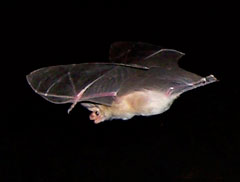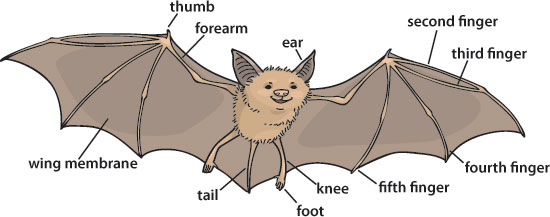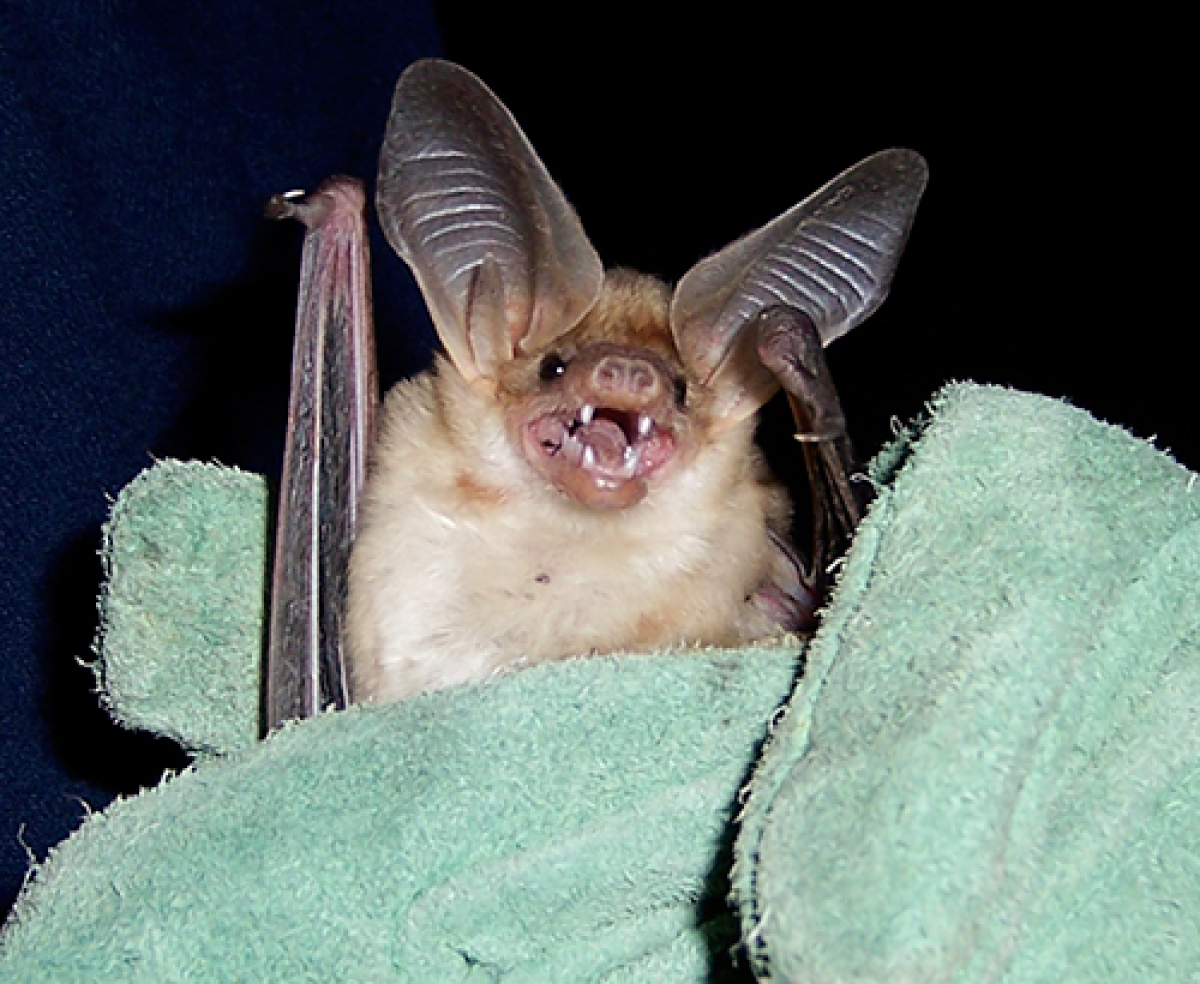
Illustrated by: Sabine Deviche

Have you ever looked up at the sky around the time the sun is going down? Did you see some animals flying around? At first you might have thought they were birds. After watching for a while you notice they just don’t seem to fly like birds. Instead of swooping and gliding they tend to have a more erratic or unpredictable pattern. Most likely you are seeing bats.
Misunderstood Bats
Like humans, bats are mammals. They are warm-blooded, covered in hair, have live young, and nurse their young (called pups). Unlike humans, bats have wings, which allow them to fly. Despite their differences on the outside, when we look at the bones on the inside they are very similar to those found in birds and even humans.
You might also have heard the common expression “blind as a bat.” Actually bats can see quite well. In fact, bats can hear, smell, and feel just like humans. Unlike humans, who spend most of our time in the daylight, bats are nocturnal so you see them out only at night. To help them find food in the dark bats use high frequency sound waves and their echoes to find and catch their favorite food - insects. The sound waves are so high that humans cannot hear them, but bats and some other animals such as dolphins use sound waves and their echoes to navigate and locate food. This is called echolocation.
Anatomy of a Bat

You Can Find Bats Almost Anywhere
Did you know that bats live on every continent except Antarctica? That means that you can find bats as far north as Alaska and as far south as Argentina. There are about 1000 species or different types of bats and most species live in tropical regions near the equator where it is nice and warm.
Bats Come in Different Sizes
Bats come in an amazing range of sizes. The world’s smallest bat is the bumblebee bat from Thailand. The bumblebee bat’s body (say that three times fast) is the size of your thumb, it weighs less than a penny, and has a wingspan of 15.24 cm (6 inches). The bat holding the record of the largest bat is the Flying fox. These bats have a wingspan that can be as large as 1.8 meters (6 feet). Flying foxes are fruit eating bats and are found in the tropics, including Asia, Australia, Indonesia, and the Philippines.
What Makes a Good Bat Home?
Different species of bats will roost in many different types of homes. Some bats live in hollow trees or under big leaves. Other bats will roost under loose bark and others will hang from tree branches. Several species of bats roost in caves, cliff walls, and abandoned mines. Caves can support lots of bats. For example, Bracken Cave in Texas is home to almost 20 million Mexican free-tailed bats. That is more bats than the number of people that live in Mexico City, which is the second largest city in the world. While some bats like to live in caves, there are some bats that like to roost in cites. City bats can be found roosting under bridges and in buildings. Some bats even live in bat houses. Bat houses are small wood boxes, similar to birdhouses that people build to attract bats.
Why Would Anyone Want to Attract Bats?

Did you know that bats are very helpful to humans? Bats eat lots of insects. With lots of bats eating lots of insects, there will be fewer insects to bug you. Farmers like bats because they can use fewer pesticides on their crops, which save the farmers lots of money.
In the tropics, fruit and nectar eating bats are important for dispersing seeds and pollinating flowers. In fact, more than 300 tropical plants depend on bats for seed dispersal and pollination. These plants include bananas, mangoes, avocados, date, and figs. By dispersing seeds, bats are helping rebuild rainforests that humans have cut down.
This might surprise you, but vampire bats are important to humans too. Vampire bats have a special chemical in their saliva that keeps blood from clotting. This allows them to easily drink blood from cows and pigs. Scientists studied this chemical and used it to develop medicine that helps humans that suffer from blood clots and strokes.
Should I be Afraid of Bats?
Most people are afraid of bats because they think that all bats have rabies. Bats can get rabies like any other mammal. However, very few bats have rabies. And remember, you can only get rabies if a rabid animal bites you or if you come in contact with its saliva. That means you cannot get rabies just by looking at a bat.
Some people think that bats will get caught in your hair. This is also not true. Bats are excellent fliers and can easily avoid flying into your hair.
Read more about: Bats
Bibliographic details:
- Article: Bats
- Author(s): Elizabeth Hagen
- Publisher: Arizona State University School of Life Sciences Ask A Biologist
- Site name: ASU - Ask A Biologist
- Date published: 20 Oct, 2009
- Date accessed:
- Link: https://askabiologist.asu.edu/explore/bats
APA Style
Elizabeth Hagen. (Tue, 10/20/2009 - 21:16). Bats. ASU - Ask A Biologist. Retrieved from https://askabiologist.asu.edu/explore/bats
Chicago Manual of Style
Elizabeth Hagen. "Bats". ASU - Ask A Biologist. 20 Oct 2009. https://askabiologist.asu.edu/explore/bats
Elizabeth Hagen. "Bats". ASU - Ask A Biologist. 20 Oct 2009. ASU - Ask A Biologist, Web. https://askabiologist.asu.edu/explore/bats
MLA 2017 Style

The large ears of pallid bats help them find prey.
Be Part of
Ask A Biologist
By volunteering, or simply sending us feedback on the site. Scientists, teachers, writers, illustrators, and translators are all important to the program. If you are interested in helping with the website we have a Volunteers page to get the process started.



